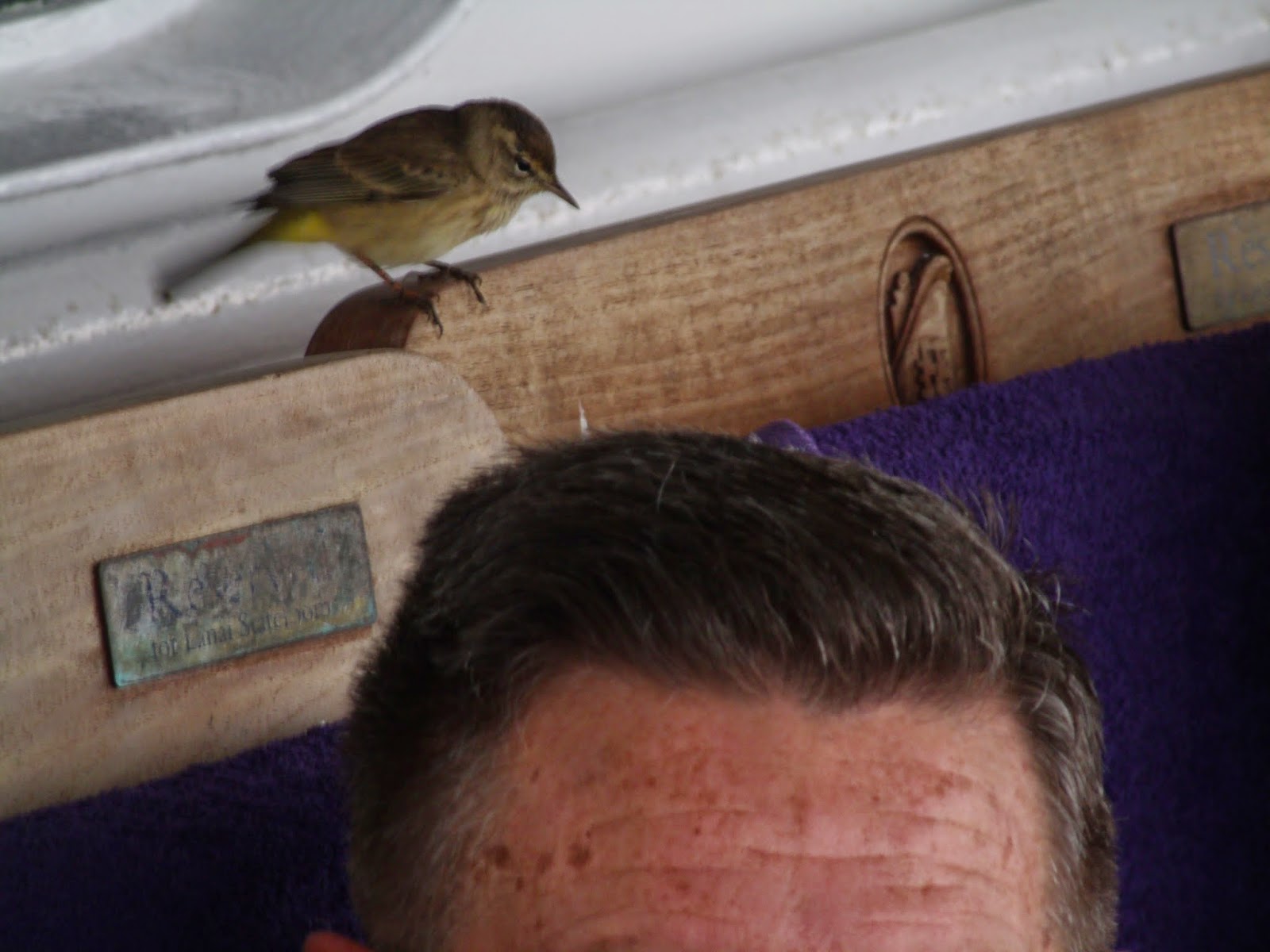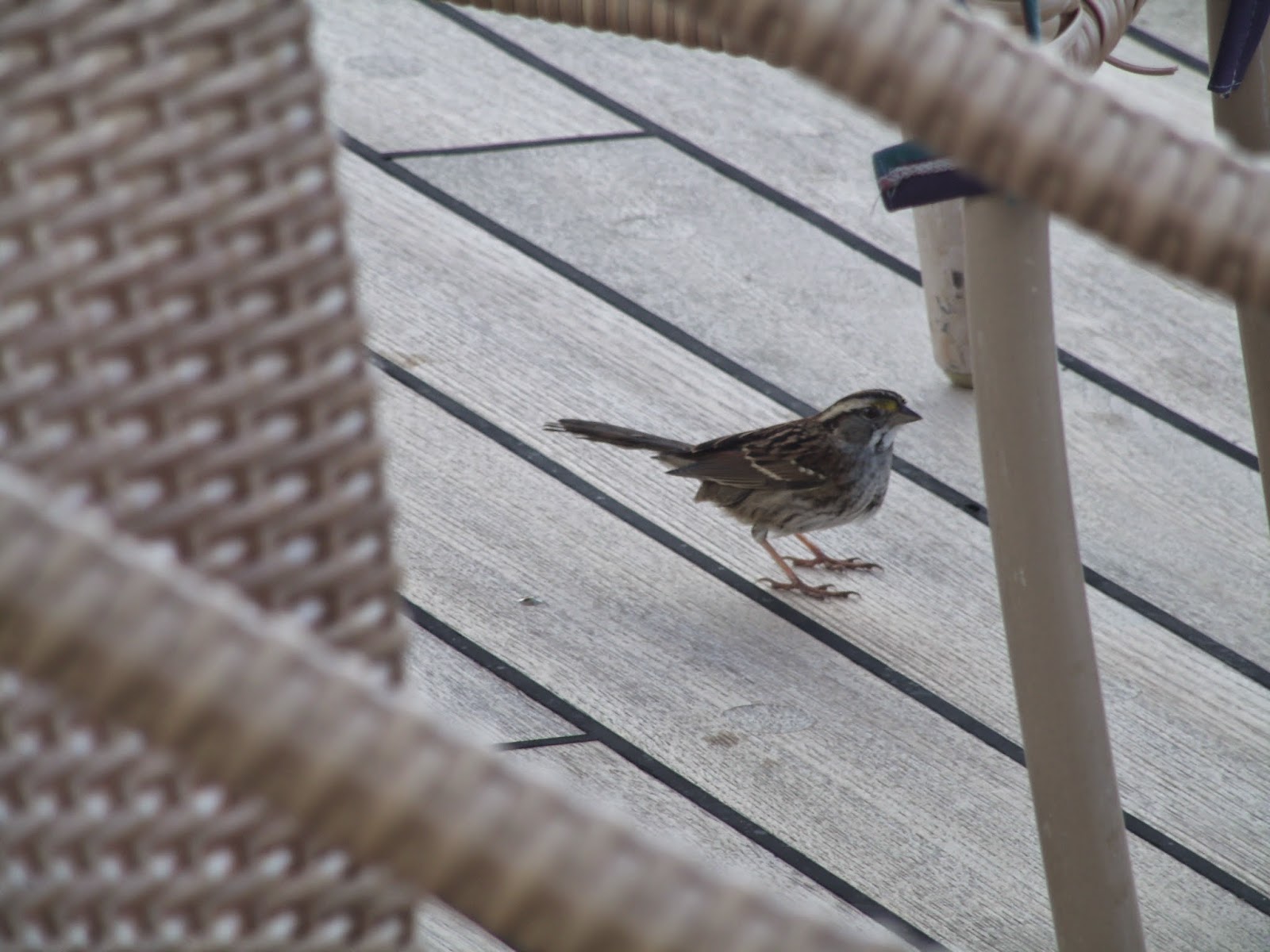Perini Navi to sailboats is like Gulfstream Jets
to general aviation (they rock). My guess is this dingy goes for about $25M (used). It's a very capable, luxurious ocean going sailboat (maybe 120 feet)? Still, no way. Not big enough (plus Perini Navi won't take a check for one of their boats without 2 forms of photo ID and I only have a drivers license). Why isn't this thing big enough? Have you ever seen what goes on in the middle of the damn ocean?
The above two pictures aren't from the web. I took these right off our veranda. While they may not impress you initially, there's a couple things you need to keep in mind. Our veranda was about 80 feet above the water. These aren't rogue waves. These waves accompanied us for 6 days across and for 6 days back across. That's because the part of the Atlantic we were cruising in is famous for the winds. They're called the trade winds and blowboat sailors have been taking advantage of them for hundreds of years. They blow more or less constantly. Since waves are a direct result of wind (speed, duration, and fetch) guess what happens? Yup, those are 14+ foot waves. In a "boat" this size:
you can barely feel them. The difference in ride between a 55,000 ton ship and a 157 ton blowboat going through big waves is remarkable (to say the least). The difference in speed also comes into play. The MS Maasdam (Holland America) can blast through 14 foot seas at 18 knots. In any smaller boat you'd have to slow down. 6 knots would be considered safe. That TRIPLES the duration of the crossing from 6 days to 18. I don't know about you, but I'm pretty sure that I can't throw up for 18 days in a row and still think I'm having a fun time.
The Maasdam holds 1,838 passengers and crew. Human that is. But we weren't always the only ones on board. No, not rats, visitors like this buzzard wannabe:
This is an Osprey that we picked up a couple hundred miles off the Florida coast. I was surprised to see a fish-eating land bird this far out to sea. He was happy to take a rest (and a dump) on the foremast. We also had this yellow warbler stowaway along for the ride:
 |
| (This isn't my liver spotted head) |
From his behavior, I'd guess that this wasn't this bird's first cruise. He had very little fear of humans (actually came to my hand and pecked my finger). He was extremely adept at catching all the flying bugs we picked up in port. He came aboard in Ft. Lauderdale and disembarked in Puerto Rico. I wonder if he hitched a ride back on another ship or just took the 4:30PM American Airlines flight to Miami like most tourists. He wasn't the only small flying visitor.
This is a gray catbird. Catbirds are cousins of the mockingbird and are normally very very shy and retiring. Usually you only hear them in the bushes, you don't see them. Even if you only hear them - it's easy to tell a catbird apart from a mockingbird. A mockingbird will sing the same song phrase several times (much like an annoying drunk in a bar). A catbird sings the phrase only twice. If you don't hear him correctly the first two times, too bad, he won't repeat it.
Most people in the US think of Puerto Rico like the view I saw looking directly down from the veranda
Look closely for the roundish white doodad floating in the water right next to the dock. Here's a telephoto shot
That would be grossly unfair to Puerto Rico. It's actually a very beautiful island filled with quite happy people. I'll leave the commentary on Puerto Rico alone and only consider the fort in old San Juan. During all my business trips there I had never taken the time to visit it. Some people love to visit churches as they travel. Others love forts. God knows there's enough of each at every destination to keep both groups happy. Me? I'll happily look at a couple, then I get sick of them and look for something more interesting - like a bar or cigar store. The fort in old San Juan is unique, however. Compare the fort in San Juan (construction started in 1539)
To the fort in Civitavecchia, Italy (its pronounced 'chitty' 'chitty' 'bang' 'bang' by the way)
and the fort in Almeria, Spain (its pronounced "I'll marry ya")
See the difference? No? One's Catholic, one's Presbyterian, and one's Lutheran. Aw crap, I thought I was on churches already. The difference between the forts is that San Juan's is strategic and the others are merely tactical. Every single port we pulled into had an old stone fort. Most of the time they were for the protection of the port against marauding neighbors, pirates, smugglers, and assorted idiots. Castillo San Felipe del Morrow (that's San Juan fort's full name), however, was critical to Spain's plundering of South America. Once again, location, location, location..... San Juan was at the far western end of Spain's empire. The natural harbor was critical for ships provisioning up for the long voyage across the Atlantic to Spain (Jose's Bar and Grill on the beach played a big role as well). You could argue that Cuba and other places had harbors that were equal or better. San Juan's was much much easier to defend, plus conquering the wimpy native Tainos indians took the heavily armed Spaniards less than a week. Below, looking out through a sentry box, is the magic 1/2 mile entrance
look how close it has to get
Piece of cake to defend the harbor from a direct attack by a wooden man-o-war. All you have to do is load up the cannon with "hot shot" (heated cannonballs) and blow the bastard to pieces while you set him on fire.
Purists will note that the cannon in the first picture is incapable of even being loaded, much less fired.
Students of General Sun Tzu (the Chinese warrior, not the Chinese chicken guy - that was General Tso) will realize that if a frontal attack on the fort by water was hopeless, then put marines ashore elsewhere and march over to the fort across the land. In 1625 the Spaniards damn near lost the fort in exactly this manner. By the Dutch, no less. They reluctantly erected a monument in honor of the near defeat.
They took the lesson to heart and over the next 50 years built up the fort to the point where it became the largest Spanish fort ever built. In 1595, Englishman Sir Francis Drake attacked San Juan with his fleet. He failed, however, and the Spanish gunners shot a cannonball through his cabin. Fortunately for Frank, he was on deck at the time. During the Spanish American War in 1898 the United States attacked the fort . The Spanish gave up and signed the Treaty of Paris. To show they were good sports (and probably to dump off a lot of land that had become a pain-in-the-ass to take care of now that they had stripped it of all the gold) they tossed in the Philippines, Guam, Cuba, along with Puerto Rico to the US. According to Wikipedia - in 1915 a lowly lieutenant (officer of the day) ordered the shooting of an armed German supply ship that was trying to sneak out of the harbor without settling it's bar tab, I mean, was trying to resupply German submarines out at sea. The shots ordered by Lt. Marxuach are widely regarded to be the first shots fired by the United States in World War I,
As usual, during WWII the US added some improvements to the fort (having been renamed Fort Brooke)
Complete with built in bathroom
Even the ceilings are cool
I can't imagine pulling guard duty on a hot, windless day in one though.

.JPG)









.JPG)








































